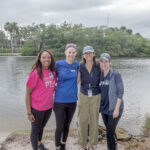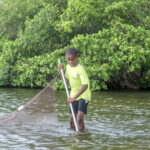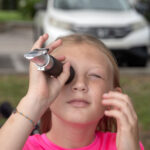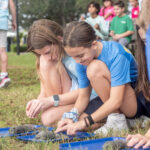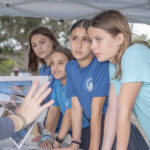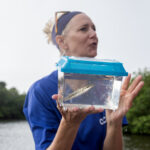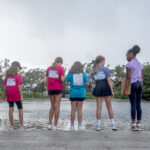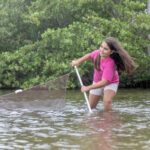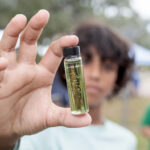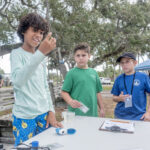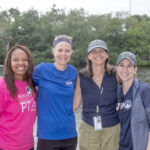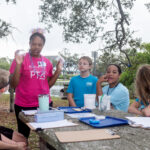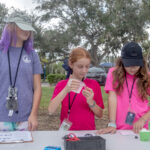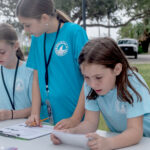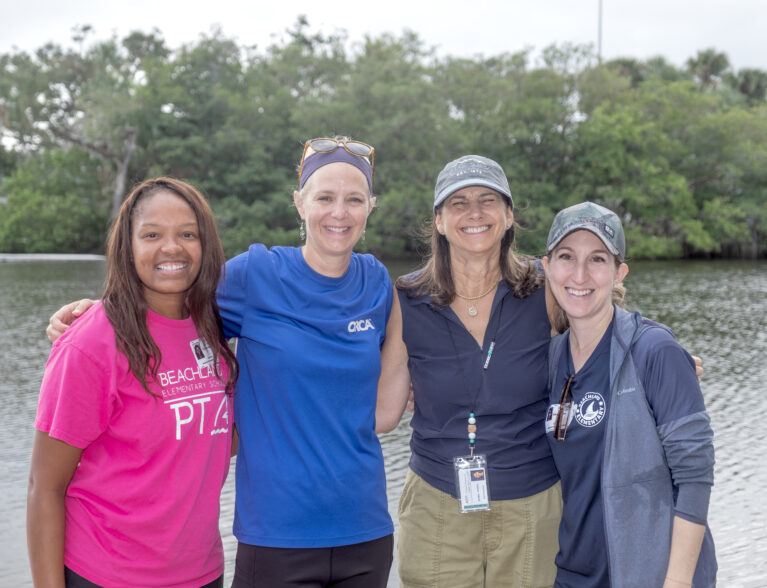
Hundreds of students made waves during the seventh annual A Day in the Life of the Indian River Lagoon event, an Ocean Research and Conservation Association citizen science project that takes place along the 156-mile Indian River Lagoon from Volusia County to Palm Beach County.
“Your job is to collect data or information about this sampling location,” said Missy Weiss, ORCA director of citizen science and education, to Beachland Elementary School students, just before they began collecting samples and logging data at the MacWilliams Boat Ramp.
The inventories amassed by students in Volusia, Brevard, Indian River, St. Lucie, Martin and Palm Beach counties will be used for comprehensive water quality and biological data testing.
The samples enable ORCA to conduct biological inventories to assess the estuary’s health using temperature, salinity, dissolved oxygen levels, pH, and nutrient concentrations like nitrates and phosphates.
In addition, the real-world experimental research program helps to develop the scientific inquiry and data analysis skills of elementary, middle and high school students across the six counties, as they immerse themselves in the lagoon project.
“The teachers work with the students beforehand to ensure the data they collect is reliable and usable,” said Weiss. She noted that ORCA staff members visit classrooms to educate students and instill an interest in environmental conservation and STEM (Science, Technology, Engineering and Math) professions.
A Day in the Life was designed to encourage students to become active stakeholders in the environment. The hands-on experience helps them understand the ecological significance of our local waterways and the impacts of pollution on the lagoon and beyond.
By using scientific tools and processes, these young ecological stewards further advance their science education and cultivate an appreciation for the lagoon’s ecosystem.
“This is an annual Citizen Science research project that students up and down the entire Indian River Lagoon from Volusia County down to Palm Beach County participate in. They will go out on the same day to collect the same biological, chemical, and physical characteristics about their sampling location,” Weiss explained.
To date, 9,000 teachers, students and citizen scientists have participated in ADIL. This year, more than 1,800 students worked with 22 environmental partner groups at waterfront locations along the length of the lagoon.
In Indian River County, ORCA and other organizations such as Coastal Connections and the Indian River County Stormwater Division worked with students from Beachland Elementary, Sebastian Charter Junior High, Sebastian River High School, Vero Beach Elementary and Vero Beach High Schools at sites including Dale Wimbrow Park, MacWilliam Boat Ramp, Round Island Park, Riverside Park, Riverside Park Peninsula, Sebastian Inlet State Park and Wabasso Causeway.
ORCA is the “nation’s first technology-based marine conservation association dedicated to protecting and restoring the aquatic ecosystems of the lagoon and the species they support.”
Its citizen science projects focus on preserving and protecting the lagoon through science, restoration, advocacy and education. Other projects include One Health Fish Monitoring, Land to Sea and Pollution Mapping.
For more information, visit teamorca.org.
Photos by Joshua Kodis
- Ty Marcelin, Missy Weiss, Debra Morse and Naomi Speer
- Alex
- Kendall
- Kolbie and Kalyssa
- (Front to Back) Emma, Kalyssa, Brooklyn and Kolbie
- Missy Weiss
- Amber
- Devontae
- Devontae, Jonathan and Luke
- Ty Marcelin, Missy Weiss, Debra Morse and Naomi Speer
- Paisley, Kayla and Gabriella
- Debra Morse, Charlee, Ella and Mia

